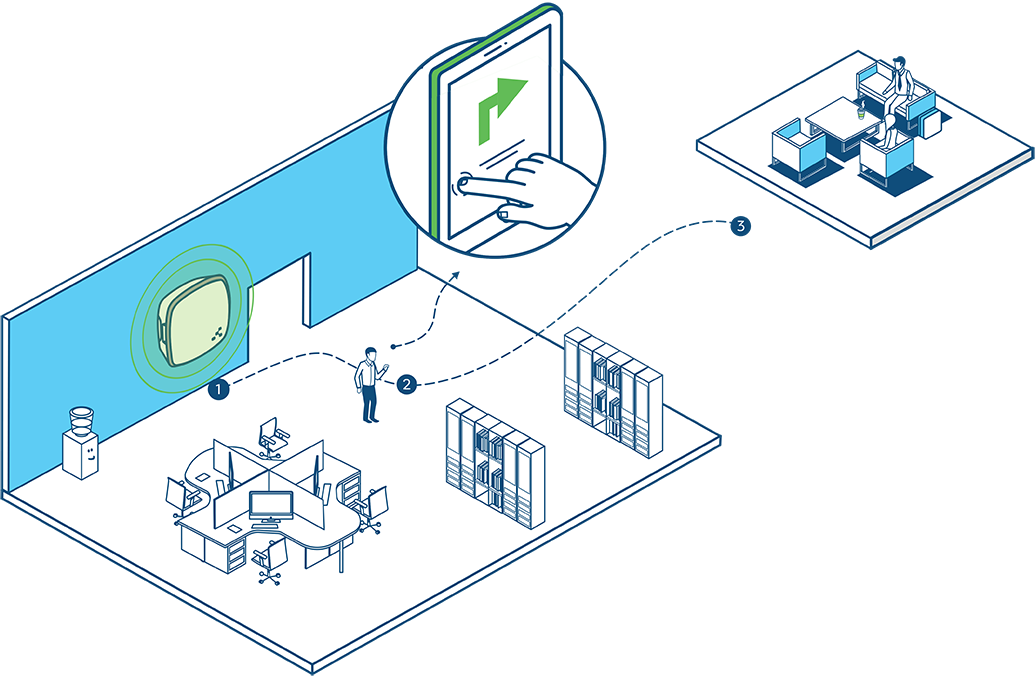
Indoor positioning has long been a challenge due to the limitations of GPS and other wide-area navigation systems. However, the advent of Bluetooth beacon technology has transformed the landscape of indoor navigation, making it more precise and accessible. This article explores how Bluetooth beacons facilitate indoor positioning and the advantages they bring to various environments.
The Challenge of Indoor Positioning
Traditional outdoor navigation systems often fall short when it comes to indoor environments. The presence of walls, floors, and other obstructions can interfere with signals and make it difficult to pinpoint a location with accuracy. This is where Bluetooth beacons step in to offer a reliable solution.
The Role of Bluetooth Beacons in Indoor Positioning
Bluetooth beacons are small, wireless devices that transmit signals within a specific range. They operate on Bluetooth Low Energy (BLE), making them ideal for indoor environments where accuracy and energy efficiency are paramount.
- Proximity Detection: Beacons can detect the proximity of a device to a certain point, allowing for location-based services and navigation cues.
- Micro-Location Services: By strategically placing beacons throughout a building, highly accurate micro-location services can be provided.
- Indoor Mapping: Beacons can be used to create detailed indoor maps, assisting users in navigating complex spaces like shopping malls, hospitals, or large office buildings.
Advantages of Using Bluetooth Beacons for Indoor Positioning
- High Accuracy: BLE beacons offer a high level of accuracy, making them suitable for precise indoor positioning.
- Low Power Consumption: Due to their BLE technology, beacons consume minimal power, ensuring a long operational life.
- Scalability: The system can be easily scaled to accommodate larger areas or additional beacons for enhanced coverage.
- Integration with Existing Technologies: Beacons can be integrated with existing mobile apps or digital platforms, providing a seamless user experience.
- Customizable: The signals and data transmitted by beacons can be customized to meet the specific needs of different environments.
Applications of Bluetooth Beacons in Indoor Positioning
The use of Bluetooth beacons for indoor positioning has found applications in various sectors:
- Retail: In shopping centers, beacons can guide customers to specific stores or offers, enhancing the shopping experience.
- Hospitality: Hotels can use beacons to provide wayfinding services, making it easier for guests to navigate large properties.
- Transportation: Airports and train stations can leverage beacons to guide passengers to gates, platforms, and amenities.
- Museums and Exhibitions: Beacons can offer interactive exhibits and guide visitors through the displays.
Strategies for Implementing Bluetooth Beacons for Indoor Positioning
To effectively implement Bluetooth beacons for indoor positioning:
- Assess the Environment: Understand the layout and specific requirements of the indoor space.
- Plan Beacon Placement: Strategically place beacons to ensure comprehensive coverage and accurate positioning.
- Integrate with Mobile Apps: Develop or integrate beacon functionality into mobile applications for a seamless user experience.
- Ensure User Privacy: Be transparent about the use of beacons and obtain user consent where necessary.
- Test and Optimize: Regularly test the system and make adjustments to improve accuracy and performance.
Challenges and Considerations
While Bluetooth beacons offer significant benefits, challenges such as signal interference, initial setup costs, and the need for compatible devices must be considered.
Overcoming Implementation Challenges
- Minimize Interference: Use high-quality beacons and carefully plan their placement to avoid signal interference.
- Cost Management: Weigh the benefits against the costs of implementation and explore options for cost-effective deployment.
- Device Compatibility: Ensure the beacon system works with a wide range of devices to maximize user engagement.
Conclusion
Bluetooth beacons have made significant strides in simplifying indoor positioning, offering a precise and energy-efficient solution. By understanding the advantages and addressing the challenges, businesses and institutions can harness the power of beacons to create a more navigable and interactive indoor environment. As technology continues to evolve, the role of Bluetooth beacons in indoor positioning is expected to expand, offering even greater possibilities for enhancing the way we interact with indoor spaces.



